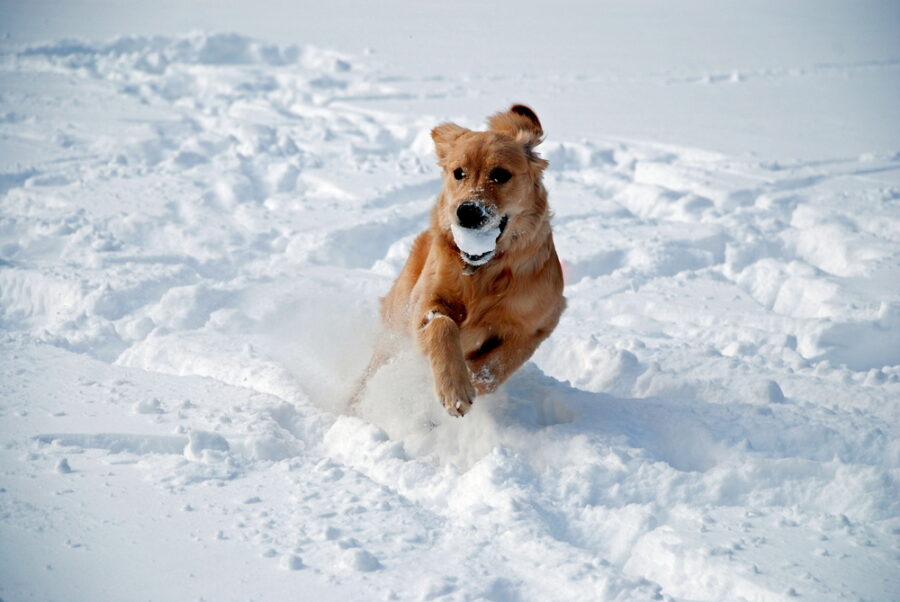Learn how to choose the best toothpastes and toothbrushes for dogs and cats to maintain their dental health and prevent expensive oral care. Keep their smiles healthy!
Dogs and cats need dental care just like us. Neglecting their dental health can cause painful tooth and gum issues, and even lead to severe systemic disease.
In addition to regular dental checkups, it’s crucial to care for your dog or cat’s teeth at home. One way to accomplish this is to establish a proper tooth-brushing routine. This article focuses on toothpastes and toothbrushes for dogs and cats and how to choose the right products.
Flag it: Cats have almost as many permanent teeth as humans (30 compared to 32), while dogs have ten more permanent teeth than we do, for a total of 42.
Why brush your dog or cat’s teeth?
A lot of people don’t understand the importance of keeping their animals’ teeth and gums clean and gunk-free.
“Brushing your pet’s teeth daily is the best way to help keep their teeth and gums healthy,” says veterinarian Dr. Liza Cahn. “It also decreases their risk of developing common dental issues, such as periodontal disease, and cuts back on the frequency of veterinary dental cleanings under anesthesia.”
Flag it: Regular brushing can preserve your dog or cat’s health – and a lot of money in vet bills down the road.
Choosing a toothpaste: don’t use human products
When searching for the perfect toothpaste for your dog or cat, there are a few things to keep in mind:
- First and foremost, only use products formulated specifically for animals.
“Human toothpaste can contain harmful ingredients like xylitol, which is toxic to pets, and foaming agents they dislike,” says Carrie Winckler, CVT, VTS (Dentistry).
Pet toothpastes often come in flavours like beef, salmon, or peanut butter to make brushing more appealing. As you can imagine, disguising the toothpaste as a tasty treat makes brushing your dog or cat’s teeth less of a battle! - Carrie recommends choosing toothpastes with the Veterinary Oral Health Council (VOHC) seal, which proves the product effectively reduces plaque and tartar build-up.
- Choose a toothpaste formulated specifically for your animal companion’s species.“Some ingredients in dog dental products can actually be toxic to cats,” explains Dr. Cahn. If you’re unsure which toothpaste to use, ask your integrative holistic veterinarian for their recommendations. They may even have some for sale at the clinic.
Flag it: Don’t use a cat toothpaste on a dog, or vice versa.
Choosing a toothbrush: size matters
As with toothpaste, you need to buy a toothbrush that’s designed for the canine or feline mouth. A human toothbrush won’t fit the bill. Several factors determine the type of toothbrush you should choose.
Not all animals will be comfortable with the sound and feel of an electric toothbrush.
- Choose a toothbrush that fits your dog’s or cat’s mouth. Larger dogs need a full-sized brush, while a finger brush is better for small dogs or cats.
- Be sure the toothbrush has soft bristles. Stiff or hard bristles can scrape and damage their gums.
- Both manual and electric brushes clean your pet’s mouth effectively, but some animals may not like the sound or feel of an electric toothbrush. If you think your animal will balk at an electric toothbrush, opt for a manual one.
Flag it: As with our toothbrushes, those for dogs and cats need to be replaced regularly, as soon as they start looking frayed.
Paw Ready (pawready.com) offers both toothpastes and toothbrushes for dogs and cats. Several flavours of toothpaste are available, as well as subscriptions for their toothpaste and toothbrushes.
After choosing the right toothpaste and toothbrush, establish a regular brushing routine. Purchasing the right toothpastes and toothbrushes for dogs and cats, and establishing a routine brushing habit, will help keep their pearly whites healthy and sparkling!
Establish a toothbrushing routine.e
Starting a new routine with your dog or cat can be challenging, but consistency is key. Brush at least three to four times a week to keep your smile healthy.
“Some ingredients in dog dental products can actually be toxic to cats.”
“It takes approximately 24 hours for plaque to harden into tartar on the teeth,” says Dr. Cahn. “Once tartar is present, only a dental cleaning under anesthesia can remove it. Tartar also irritates the gums, beginning the progression to gingivitis and periodontal disease.”
Decide when to brush your dog or cat’s teeth, whether after playtime or before bed, and stick to it.
How Diet Supports Dental Health in Pets
While brushing is the gold standard for maintaining your dog or cat’s oral hygiene, diet plays a significant supporting role in keeping their teeth and gums healthy. Certain foods and treats are designed to reduce plaque and tartar buildup naturally, without the need for scrubbing.
Dental chews for dogs are formulated to help scrape off soft plaque through mechanical chewing action. Many of these treats are shaped and explicitly textured to reach the gumline, where bacteria often gather. Look for chews that have the VOHC (Veterinary Oral Health Council) seal, which indicates they’ve been tested and proven to reduce dental plaque and tartar.
For cats, crunchy kibble tends to be better for dental health than soft, wet food. Some brands even offer dental-specific dry cat food that’s slightly larger and textured to encourage chewing and reduce buildup.
Additionally, incorporating raw bones (under supervision), dental water additives, and even enzyme-infused treats can help support your pet’s mouth between brushings.
Tip: Avoid sugary treats or table scraps that stick to teeth, as they can accelerate plaque formation and gum disease.
By combining a dental-friendly diet with regular brushing and checkups, you’re giving your furry friend a complete and well-rounded approach to oral wellness.
Final Words
Your pet’s dental health is more than just about fresh breath; it’s a key part of their overall well-being. By choosing the right toothbrush and toothpaste, maintaining a consistent brushing routine, and supporting their oral care through wise dietary choices, you can help prevent painful conditions and costly vet visits down the road. Start small, stay consistent, and turn toothbrushing into a positive bonding experience. A healthy mouth means a happier, healthier pet, one tail wag or purr at a time!








